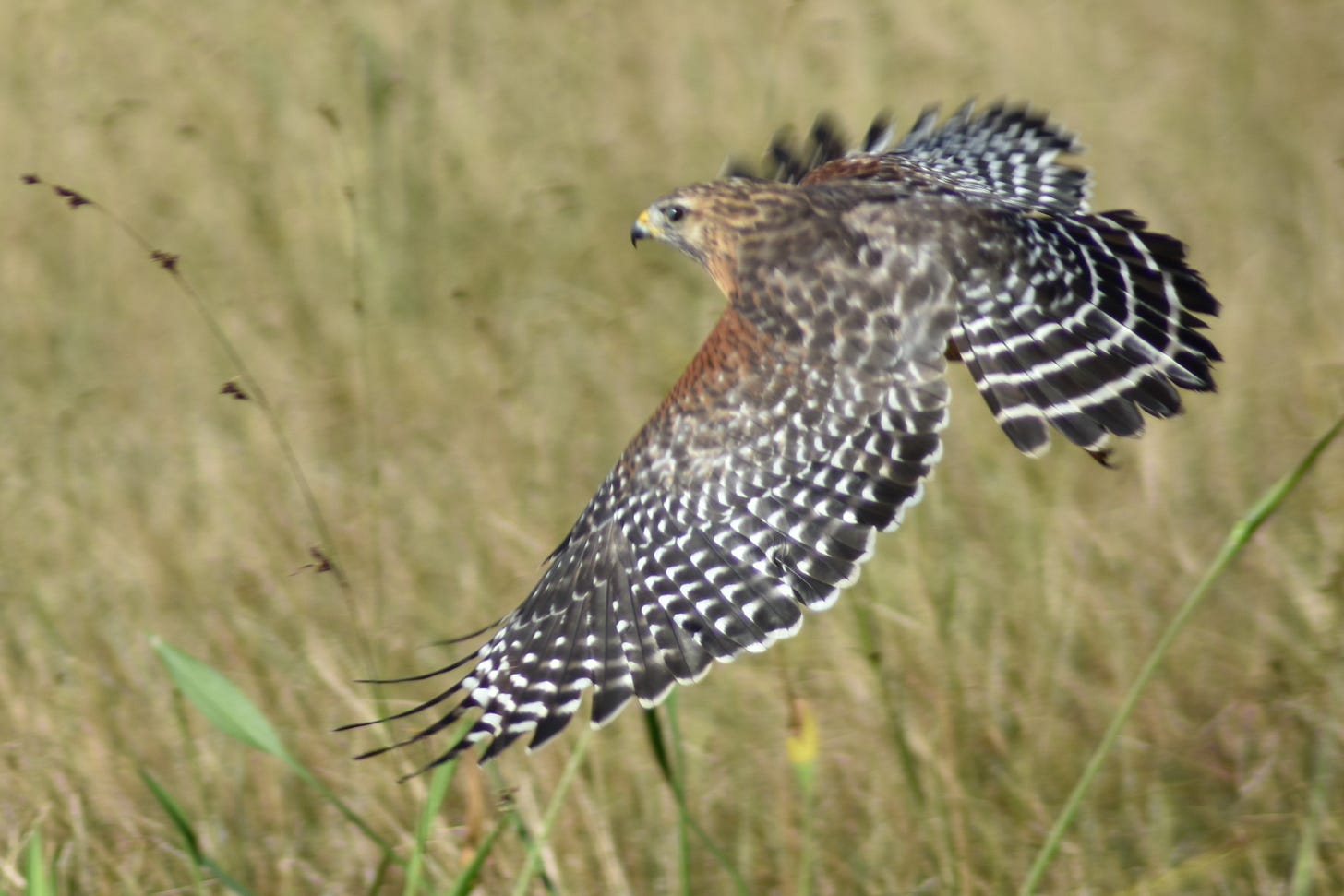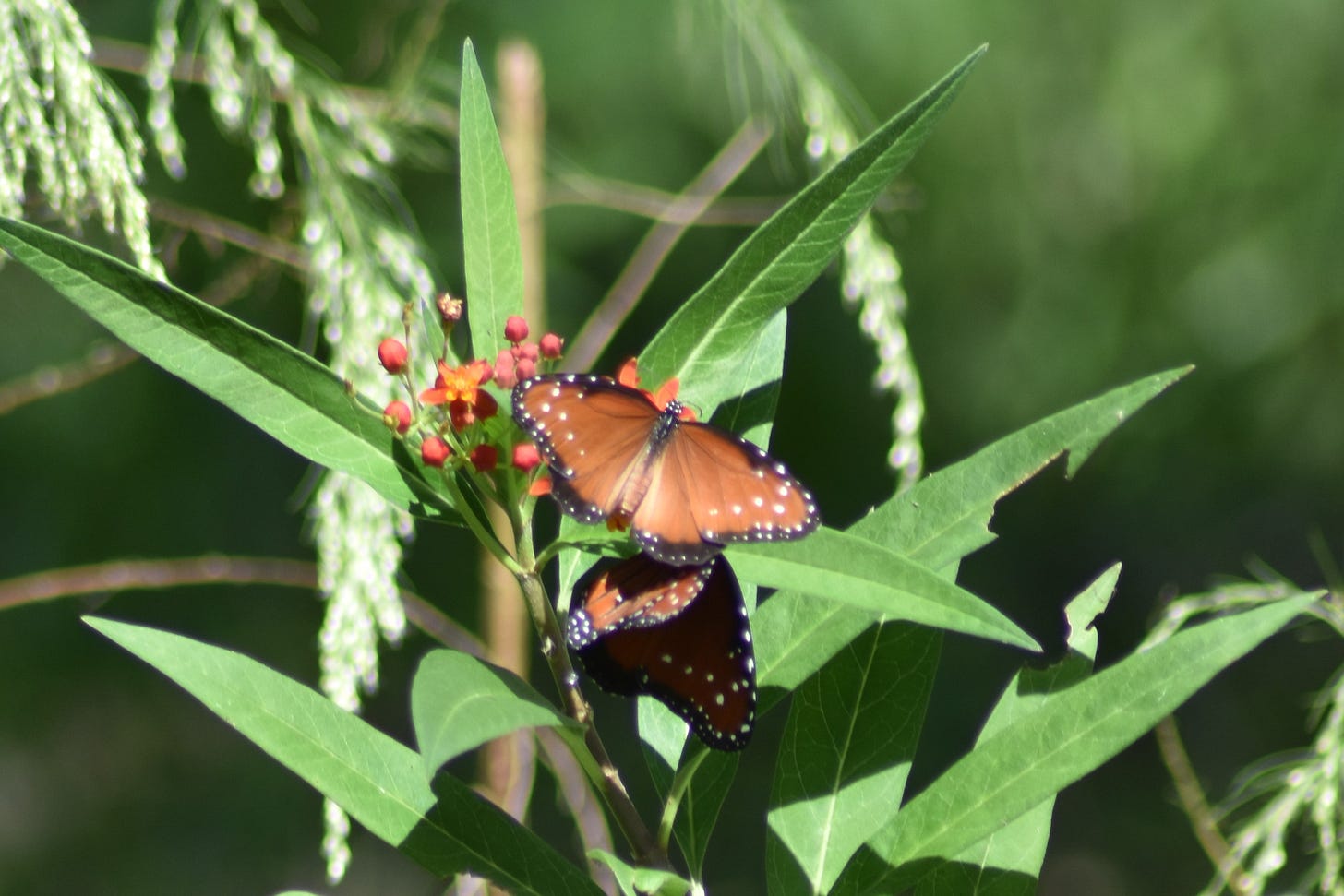Review of Lake Monroe Conservation Area Red Hiking Trail
Another wet-footed hike
I went hiking at Lake Monroe Conservation Area on 11/02/2020 which is in Volusia County near the city of Sanford. It’s divided into 2 parts — the Kratzert Tract and the Brickyard Slough Tract. The Kratzert Tract lies northwest of Route 415 and the Brickyard Slough Tract lies to the southeast of 415. The Kratzert Tract is considered a Wildlife Management Area. Hunting is allowed there from October thru January.
The Red Trail is on the Brickyard Slough Tract. It’s a 1.9 mile trail out to the St. John’s River for a 3.8 mile round trip. The entire trail is in a cattle pasture. The ground ranges from dry to very wet and muddy. No hunting is allowed on the Brickyard Slough Tract.
The St. John’s River is a large river in Central Florida. In this region it’s not a single river channel. It divides into dozens of small rivers and meanders through this its course. This land is part of the St. John’s River flood plain. Tracts like this allows the St. John’s River to become much wider during flood times, preventing floods further downstream.
Soon after I began my hike a bald eagle flew over. He circled me a couple of times and then continued on his way. I always like taking pictures of these guys, especially against an unclouded blue sky. He never came near enough to get a really crisp picture. But it came out relatively clear.
A few hundred yards further a red shouldered hawk flew out of a tree and relatively close in front of me. He landed and immediately grabbed a small lizard. I think he saw the lizard from afar and was afraid I would scare it so decided to act. This picture wasn’t as good as I hoped as the focus made the near wing very clear but the face slightly less focused. But with wildlife photography sometimes you don’t have time to think through all the camera settings before the shot is gone.
The ground alternated from very dry to completely covered with water. There were several times when there was no way around a muddy spot. It was just a matter of starting walking and hope I didn’t sink too far. One mud puddle that I thought was relative shallow sunk my leg up to mid calf in pure muck. Especially near the St John’s River the trail was a slow grind to make it across the mud. This hike isn’t for anybody who can’t bear to stain their brand new hiking shoes.
Tropical milkweed plants frequently grow wild in pasturelands. Cattle keep the competing plants short but won’t touch tropical milkweeds. This allows to them to thrive. I always get excited when I find these plants because that’s where you will usually have monarch butterflies. These milkweeds give monarch caterpillars and butterflies a very bad taste to birds. A very good defense against most butterfly’s greatest predator. I saw at least 100 milkweeds in the pasture.
I took this picture from a distance. I actually thought this was a soldier butterfly initially. The soldier butterfly is an orange butterfly closely related to the monarch that also lives on milkweeds. However this was a monarch. I think it’s a female as they have blacker, bolder lines.
The queen butterfly is another that is related to the monarch. Its caterpillar also lives on milkweed. These orange butterflies, along with the viceroy and admiral, were named by naturalists in North America during the late 1600’s. The British King at that time was William III, also known as William of Orange. Brown-nosing the boss has a long history.
The trail was mostly open fields. However there were a few places that it passes through some trees. Here are some palm and oak trees on the edge of the trail. Look closely and you can see a pair of turkeys walking behind.
Overall it was a very nice hike. I loved the number of tropical milkweeds that were present. They’re always fun to watch for butterflies. Also the St. John’s River is a great place to look for birds. Add in a few wooded areas and you have a lot of natural environments in a relatively short hike. Assuming you’re not opposed to getting your feet wet.








